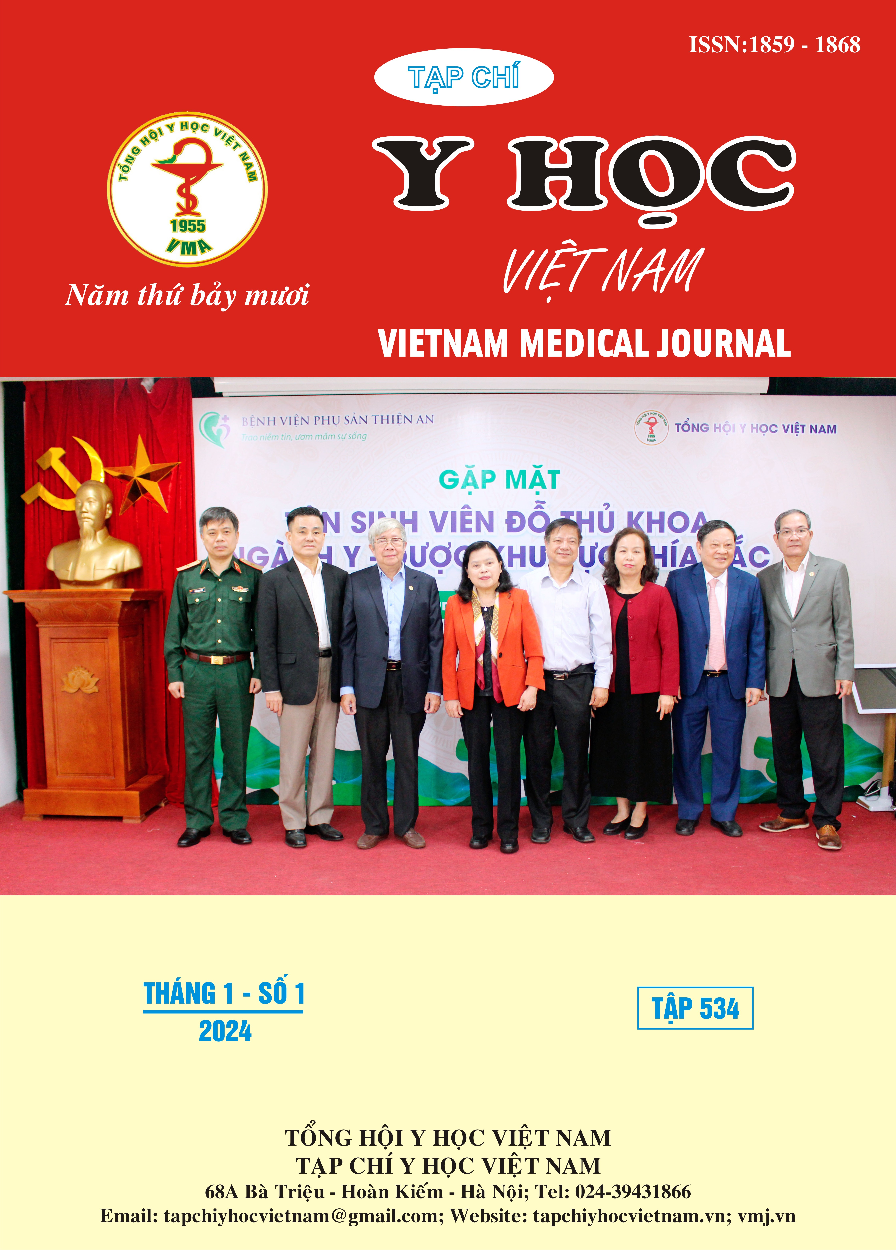EVALUATION OF THE PALBI-INDEX IN THE PROGNOSIS OF PATIENTS WITH HEPATOCELLULAR CARCINOMA
Main Article Content
Abstract
Objective: Evaluate the PALBI index in the prognosis of patients with primary hepatocellular carcinoma. Research subjects and methods: Retrospective descriptive study on 83 patients diagnosed with primary hepatocellular carcinoma with ICD code C22 according to the standards of the Ministry of Health in 2012 treated at Nghe An General Friendship Hospital from January 2017 to July 2021. Results: The proportion of patients with PALBI 1,2,3 was 61.4, 32.5 and 6%. At 12 months, survival rates according to PALBI groups 1,2,3 were 96.1, 77.8, and 20%. The survival rate gradually decreased in the increasing PALBI groups; this difference was statistically significant with p < 0.001. At 24 months, survival rates according to PALBI group 1,2,3 were 76.5, 37.0 and 0%. The survival rate gradually decreased in the increasing PALBI groups; this difference was statistically significant with P<0.001. The average overall survival time according to PALBI groups 1,2,3 is 31.4, 21.6, and 9.5 months, respectively. The difference is statistically significant with p < 0.001. Conclusion: The PALBI index can predict relatively good survival time in patients with BMT. Applying this scale to stratify patients with cervical cancer instead of the child-pugh scale will bring many benefits in clinical practice.
Article Details
References
2. Okuda K, Ohtsuki T, Obata H, et al. Natural history of hepatocellular carcinoma and prognosis in relation to treatment. Study of 850 patients. Cancer. 1985;56(4):918-928. doi:10.1002/1097-0142(19850815)56:4<918::aid-cncr2820560437>3.0.co;2-e
3. Bộ Y tế. Hướng Dẫn Chẩn Đoán và Điều Trị Ung Thư Biểu Mô Tế Bào Gan Nguyên Phát.; 2012.
4. Lee SK, Song MJ, Kim SH, Park M. Comparing various scoring system for predicting overall survival according to treatment modalities in hepatocellular carcinoma focused on Platelet-albumin-bilirubin (PALBI) and albumin-bilirubin (ALBI) grade: A nationwide cohort study. PloS One. 2019;14(5):e0216173. doi:10.1371/ journal.pone.0216173
5. Hansmann J, Evers MJ, Bui JT, et al. Albumin-Bilirubin and Platelet-Albumin-Bilirubin Grades Accurately Predict Overall Survival in High-Risk Patients Undergoing Conventional Transarterial Chemoembolization for Hepatocellular Carcinoma. J Vasc Interv Radiol JVIR. 2017;28(9):1224-1231.e2. doi:10.1016/j.jvir.2017.05.020
6. Lu LH, Zhang YF, Mu-Yan C, et al. Platelet-albumin-bilirubin grade: Risk stratification of liver failure, prognosis after resection for hepatocellular carcinoma. Dig Liver Dis. 2019;51(10):1430-1437. doi:10.1016/j.dld.2019.04.006
7. Aravind P, Thillai K, Suddle A, et al. Application of ALBI and PALBI score as prognostic variables in hepatocellular carcinoma patients treated with transarterial-chemoembolization. J Clin Oncol. 2017;35(4):241-241. doi:10.1200/JCO.2017.35.4_suppl.241
8. Pang Q, Liu S, Wang L, et al. The Significance of Platelet–Albumin–Bilirubin (PALBI) Grade in Hepatocellular Carcinoma Patients Stratified According to Platelet Count. Cancer Manag Res. 2020;12:12811-12822. doi:10.2147/CMAR.S277013


